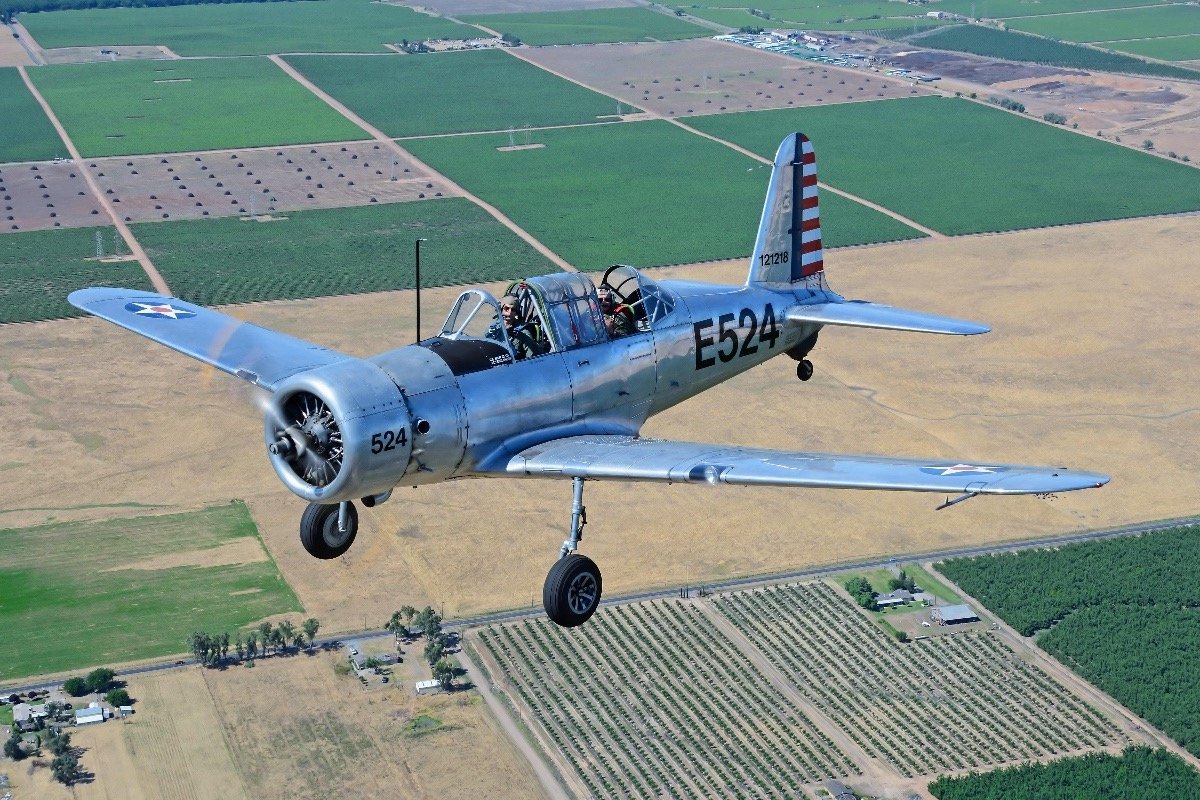
BT-13A S/N 41-21218… or “Annie”
Aircraft Serial Number 41-21218 started out life just as much as the 9,525 other examples of the Vultee BT-13 that were built in Downey, California between the years of 1940 thru 1944. Rolling off the assembly line in May 1942, the aircraft was immediately pressed into service with the United States Army Corps.
To better understand what 41-21218 did, it is important to understand how US Military Flight Training was run. For the majority of World War 2, flight training in the military was divided into three phases. Primary Training is where aviation cadets learned the basics of flight in such aircraft as the PT-17, PT-19, or PT-22. At the end came Advanced Training, where those cadets were taught the more complex operations associated with the type of aircraft they were earmarked to serve in, using the AT-6 for single-engine pilots or the AT-17 for multi-engine pilots. Basic Training was the intermediate phase was where the BT-13 came into play, where cadets learned how to work aviation radios, navigate by charts or by electronic navigation aids, and how to fly on instruments-only.
Our records indicate that she was based out of Merced Army Airfield for the majority of her wartime career, with occasional flights to other bases in the country, mostly for required maintenance work. Other than that, 41-21218 did what she does best - serving as one of several aircraft that the USAAC/USAAF used to help aviation cadets earn their wings.
There is no indication in our of when she was discharged from training duties and declared “surplus to excess”, but it was likely in late 1944 when the military elected to retire the BT-13 with the North American AT-6 Texan as a trainer. Sometime after the war, like many US built military aircraft, she was put up for sale. Unlike many BT-13s that were bought solely for their engines and subsequently scrapped (a common practice as the more powerful powerplant was a bit of an upgrade for Stearman biplanes, 41-21218 found a buyer who wanted to keep the plane in its entirety. Soloman “Sol” Sweet was its first civilian owner, and few could be more likely to buy such a aircraft. A Captain in the Army Air Corps, Sol had taught many a cadet in the BT-13 at Sequoia Field in that very plane. 41-21218 likely droned the California skies over Visalia Airport, which he helped to found.
From there, the trail goes dark until 1983. It was then when it was under the ownership of Tom Nightingale of Alta Loma, CA that it issued a civilian FAA registration of N59842. Another subsequent owner was John Hannigan. The plane even made it onto the Hollywood screen in the 1990’s film “Forever Young” as a backdrop aircraft.
A pivotal moment in 41-21218’s life would be when she fell to ownership of Martin Michaud. A longtime flight instructor and warbird enthusiast, Martin shared his warbird passion with others by giving qualified pilots in the San Francisco area the rare opportunity to train to fly his BT-13. Many local pilots jumped at the opportunity, and over the years, she gained a bit of a following as a good number of those pilots took up the call to serve as “Ambassadors Of History”. From 2014 thru 2018, 41-21218 could be found at any number of California air shows as a static display, her pilots educating the attendees with how US WW2 aviators earned their wings. In 2016, she would take that task to the ultimate expression by flying thousands of miles to Sweetwater, TX, where she paid homage to the Women Airforce Service Pilots.